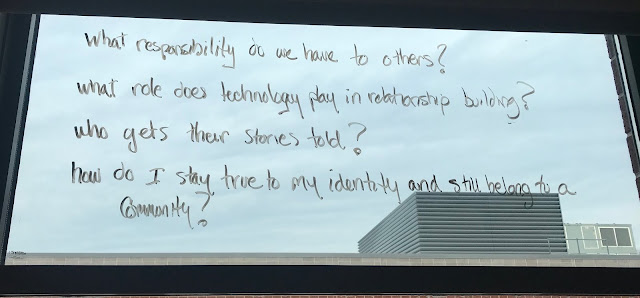Monday, October 3, 2016
12 Ways to Create Suspense - Ingrid Sundberg
12 Ways to Create Suspense - Ingrid Sundberg:
12 WAYS TO CREATE SUSPENSE
September 7, 2010 / 9 / Author Advice
Gail Carson Levine spoke at the 2010 SCBWI Conference and as part of her keynote speech she share these twelve tips on how to create suspense in your novel!
12 Ways to Create Suspense in Your Novel:
1. Time: Make the pressure loom by using a ticking clock device. There needs to be a destination in the future that is looming. Worried thoughts can also work to help emphasize the time.
2. Distance: Create space between your character and his/her goal. A need to reach a far away destination creates suspense. Don’t worry obsessively; worries are a good way to end a chapter. You can also use chapter titles to create distance.
3. Thoughts: Make your characters worry, show us the tension through their thoughts.
4. Setting: A dangerous environment will create immediate tension in your book.
5. Separation: Make the main character physically separated from the problem, send them away. Then ask yourself what is the villain doing while the main character is away? What is the enemy doing? Seeing what the enemy is up to can create tension.
6. Isolation: Create a situation where there is danger around the main character but the he/she is also isolated. What will they do on their own?
7. Expectation: We all wonder if we can we live up to the expectations around us. Build tension through what others expect of your main character. How do those expectations stress the character out? Self expectations can also be used as well.
8. A Test: Pop Quiz! Give your character some sort of test. This is an immediate tension producer. For example many of you at this conference may have a manuscript critique coming up. That’s tension you’re feeling!
9. Disaster: Create a disaster for your characters. This can be both small or large. There’s a tornado, or a character’s clothes fly off!
10. Main Character Flaw: Example – in Back to the Future the main character Marty can’t tolerate being called a coward. Now the reader will worry about when he will be called a coward and what he will do.
11. Secondary Character Flaw: Same as main character flaw. Reader and the main character will both be waiting to see what they will do.
12. Loss: Something is lost and the main character thinks it is necessary, the tension comes from the fact that they must get it back.
Subscribe to:
Post Comments (Atom)
Featured Post
Socratic Seminar - Community/Justice
Why do we feel the need to belong? How do we maintain our individual identities and be part of a community? What are the benefits and draw...

-
You can see the full graphic novel of The Odyssey and other works at TumbleBooks.com login information below ...
-
For my essential question, I decided to do it on the importance of valuing our parents and created a video. Typically, I would add a bunch...

No comments:
Post a Comment